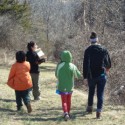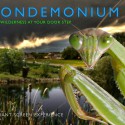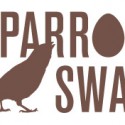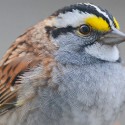 Photo ©
Keith Williams
Photo ©
Keith Williams

NestWatch Lessons in the Field
In October, we mentioned that NestWatch had received support from the Smith-Lever Act fund to design a curriculum focused on engaging youth in citizen science and nest box stewardship. Since then, this project has also received support from the Sustainable Forestry Initiative, enabling NestWatch to source lumber that was grown and harvested with habitat and bird conservation taken into consideration.This month we hit the ground running with workshops at two Upstate New York communities.
With the help of our 4-H partners, we were able to work with more than 50 participants to install 18 nest boxes intended for Eastern Bluebirds, Tree Swallows, Black-capped Chickadees, and House Wrens. Youth learned about birds’ preferred habitat types through games and online interactives including our Right Bird, Right House tool. We also covered topics such as Features of a Good Birdhouse and proper nest box installation. NestWatch staff will return to our partner sites two more times this spring to engage youth with science concepts such as breeding bird biology, nest monitoring, data collection and analysis, and hands-on nest box construction. Participants will finish the third and final workshop with a nest box of their own and the resources to become citizen scientists.
We are excited to be embarking on this new outreach initiative. Our goal is to engage youth with science and ecology with a focus on breeding birds. After all, what better gateway into science than nests, eggs, and baby birds? Look for the final product to be hosted on the NestWatch website, freely available to families and educators.

Your Nest Could Be on the Big Screen!
The natural history film company Archipelago Films needs your help! They are currently producing a film about the native plants, birds, and animals that exist in our own backyards. The film is intended to re-engage the public with nature, and foster coexistence between humans and the incredible wildlife we share our planet with.
They’re asking you to keep an eye out for the nests of particular species and to contact them any time between now and Fall 2016 if you find a nest they might be able to film. Locations around New York, New Jersey, Connecticut, and Massachusetts are ideal, but they will travel for a really special nest! Target species include birds of prey including (but not limited to): Red-tailed Hawk, Red-shouldered Hawk, Barred Owl, and Barn Owl; also open-cup native songbirds such as Blue Jays and Northern Cardinals. Additionally, the filmmakers are looking for Wood Duck nests.
Rest assured, the filmmakers are animal-lovers and conservationists, so the well-being and safety of birds and animals will always be paramount if your nest is “cast”!

What Can House Sparrows Teach Us?
House Sparrows are a non-native species that compete for cavities with native birds throughout North America. While this ubiquity can make them a nuisance around nest boxes, it can also make them a really good study subject for learning about widespread problems like environmental toxins. The Sparrow Swap Project invites you to collaborate in citizen-science research with a two-fold mission: (1) find out if House Sparrow eggs can be used to map exposure to environmental contaminants, and (2) test whether swapping real eggs for wooden eggs can reduce sparrow disruptions to other nests.
All you need to participate is a nest box that is currently attracting House Sparrows. You can participate in one of two ways:
Visit Sparrow Swap to get more information and sign up today. Sparrow Swap is a project of the North Carolina Museum of Natural Sciences; please send your questions directly to Sparrow Swap. NestWatch reminds you that only the eggs of non-native species may be collected without a permit. Do not send any eggs of birds other than House Sparrows, even if they did not hatch.

Twinning In White-Throated Sparrows
Two years ago, NestWatch brought you the story of twin Eastern Bluebirds discovered by participant Gerald Clark. We’ve recently learned that researchers have since found a new species for which twinning is now known to occur.
Adam Betuel observed the first documented case of twinning in White-throated Sparrows, a bird which breeds in the boreal forests of North America. Interestingly, White-throated Sparrows have two color morphs: tan and white. Morph type is important in White-throated Sparrows because individuals of one color type almost exclusively mate with the other color type. At the time of the discovery, Adam was working on his Ph.D., and conducting field research at the Cranberry Lake Biological Research Station (Adirondacks, New York). He focused on parental care, begging behavior, and nest success of the White-throated Sparrows. Part of Adam’s project involved the collection and inspection of any remaining unhatched eggs, to investigate why they didn’t hatch. During the dissection of a rather large egg, he discovered a pair of embryos—twins! Molecular analysis revealed that one embryo was a female white morph and the other was a male tan morph, indicating that the twins were fraternal rather than identical.
Twinning in wild birds is an extremely rare occurrence, and Adam was fortunate to study the phenomenon. Adam told us, “One of the components I liked the most about my research and about the topic of twinning is that it provides you a glimpse into the hidden world of bird breeding and nesting. Nests are all around us, but they can be hard to find. They hold so many secrets about bird behavior, growth, genetics, and life history. It always seemed like a privilege to be watching them tend to their nests or offspring…like I was catching a glimpse into a hidden world.”
Adam is now continuing his enthusiasm for nesting birds as the Director of Conservation at the Atlanta Audubon Society, one of NestWatch’s newest regional chapters.